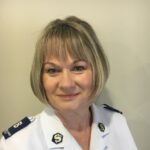I’ll admit, I had to read this passage of David and Mephibosheth several times. Every commentary I reviewed had something different to say about the interaction between these two men.
- Why was Mephibosheth cautious and self-deprecating in his interactions with King David?
- Why did Mephibosheth call himself “a dead dog”?
- Why was he so fearful when first meeting David?
- Why does the author mention two times in this short chapter that Mephibosheth is “crippled in both feet”?
- Did David respond any differently to Mephibosheth when he discovered his physical disability?
I am not sure I have any more confidence to answer these questions now, even after repeatedly reading through the story and some background study.
But additional context is helpful for why Mephibosheth might be cautiously approaching any interaction with David is that he was the grandson of Saul, the former king. It would be unusual for the new king in power (David) to want to restore attention, property and wealth on an heir to the former ruler (Mephibosheth); and yet, we read that David did just that, likely because of his referenced friendship with Mephibosheth’s father, Jonathan. Verse 7 tells us that David said, “I will restore to you all the land that belonged to your grandfather Saul, and you will always eat at my table.” In our final verse, we read, “And Mephibosheth lived in Jerusalem, because he always ate at the king’s table, and he was crippled in both feet” (v13).
I want to understand what David was doing and the implications for Mephibosheth and his life. But, for me, what I’m most interested is to consider why the reference is made to Mephibosheth’s disability at all. How does the story change, or my view of it, because we are made aware of his physical disability… twice? We know the Bible must be viewed within its context. As we consider the context of humanity thousands of years ago when this took place, we understand that physical disabilities could and would have significant implications for the quality of life of a person – for basic provision of food, essential travel, shelter.
My son recently had an appointment with a developmental pediatrician. After a couple of hours observing and interacting with him and me outlining in detail areas of growth and places where we were seeing minimal to no change, the doctor reminded me that due to my child’s developmental delays, the tendency is to be hyper-vigilant and overly attentive to areas where we don’t steady progress. When – in fact – no toddler ever develops in all areas at the same time, rather they tend to focus on one developmental growth area and, once learned, move on to another area. Does my son have developmental delays? Yes. However, that doesn’t mean that *everything* related to the pacing of his development had to be a concern. I was looking for something that wasn’t there.
What if, in the same way, I am looking for something that isn’t there? What if David’s interaction with Mephibosheth was unchanged after learning of his disability, and had no relevance or bearing over David’s care for him? What if the author is simply stating factual information by noting Mephibosheth’s “crippled feet” and there’s nothing more to it? As I reflect on this passage, I am considering how God, in his infinite wisdom, wanted us to know that David (who had a heart after God), fully welcomed a person who was disabled at his table. Friends, may we consider this passage and our future full of hope that the Kingdom of Heaven can be lived out here on earth by ensuring there is room for us all at the table.





